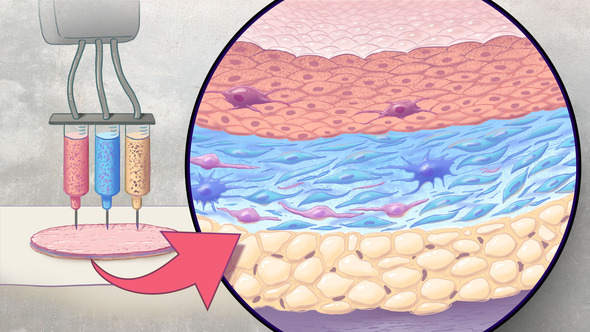| Posted on Oct. 17, 2023, by Lawrence Tabak, D.D.S., Ph.D  Each year in the U.S., more than 500,000 people receive treatment forburninjuries and other serious skin wounds.To close the most severe wounds with less scarring, doctors often must surgically remove skin from one part of a persons body and use it to patch the injured site. However, this is an intensive process, and some burn patients with extensive skin loss do not have sufficient skin available for grafting. Scientists have been exploring ways to repair these serious skin wounds without skin graft surgery. An NIH-funded team recently showed that bioprinted skin substitutes may serve as a promising alternative to traditional skin grafts in preclinical studies reported inScience Translational Medicine.The approach involves a portable skin bioprinter system that deposits multiple layers of skin directly into a wound. The recent findings add to evidence that bioprinting technology can successfully regenerate human-like skin to allow healing. While this approach has yet to be tested in people, it confirms that such technologies already can produce skin constructs with the complex structures and multiple cell types present in healthy human skin.  |